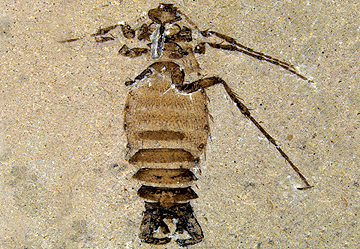Abstract
Lepidopsocids are well diversified in recent fauna, but fossil records remain very scarce. Echmepteryx (Loxopholia) dominicanus sp. nov. from Dominican amber is herein described and illustrated. This species is attributed to subfamily Lepidopsocinae Enderlein, 1903 and assigned to genus Echmepteryx Aaron, 1886. This new record is the second oldest lepidopsocid. It is also the first species in this family to be described from Dominican amber and the only fossil record of Lepidopsocinae.
References
Iturralde-Vinent, M.A. (2001) Geology of the amber-bearing deposits of the Greater Antilles. Caribbean Journal of Science, 37 (3-4), 141–167.
Lienhard, C. (1998) Psocoptères euro-méditerranéens. Faune de France, 83, Paris, 517 pp.
Lienhard, C. & Smithers, C.N. (2002) Psocoptera (Insecta): World catalogue and bibliography. Muséum d’Histoire Naturelle de Genève, Geneva, 745 pp.
Mockford, E.L. (1993) North American Psocoptera (Insecta). In: Flora & Fauna Handbook, 10, 455 pp.
Mockford, E.L. (2005) A new genus of Perientomine psocids (Psocoptera: Lepidopsocidae) with a review of the Perientomine Genera. Transactions of the American Entomological Society, 131, No. 1-2, 201–215.
Nel, A., Prokop, J., Nel, P., Grandcolas, P., Huang, Diying, Roques, P., Guilbert, E., Dostál, O. & Szwedo, J. (2012) Traits and evolution of wing venation pattern in paraneopteran insects. Journal of Morphology, 273, 480–506.
Penney, D. (2010) Chapter 2: Dominican amber. In: Penney, D. (Ed.), Biodiversity of fossils in amber from the major world deposits. Siri Scientific Press, Manchester, pp. 22–39.
Roesler, R. (1944) Die Gattungen der Copeognathen. Stettiner Entomologische Zeitung, 105, 117–166.
Smithers, C.N. (1972) The classification and phylogeny of the Psocoptera. Memoirs of the Australian Museum 14, 349 pp.
Smithers, C.N. (1990) Keys to the family and genera of Psocoptera (Arthropoda: Insecta). Technical reports of the Australian Museum, 82 pp.
Smithers, C.N. (1995) Psocoptera (Insecta) of Christmas Island. Invertebrate Taxonomy, 9, 529–561.
Thornton, I.W. (1962) Psocids (Psocoptera) from the Batu Caves, Malaya. Pacific Insects, 4 (2), 441–455.
Thornton, I.W. (1990) Psocoptera (Insecta) of the island of Moorea, French Polynesia, and comparisons with other Pacific island faunas. Bulletin du Muséum national d’Histoire naturelle, 11, section A (4), 783–828.

